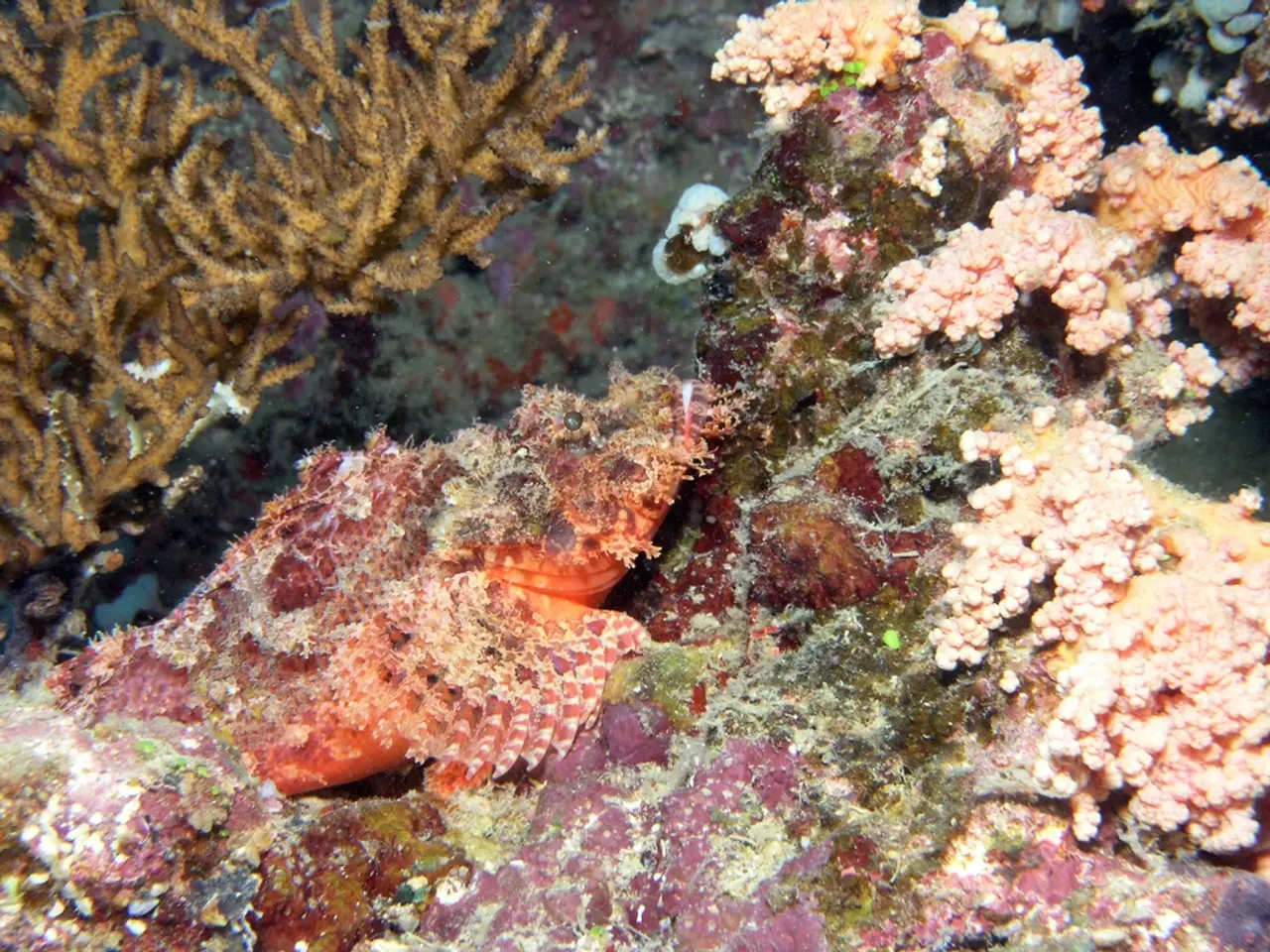Vaginal skin inflammation: Identifying signs, origin, remedies, and additional details
Allergic contact dermatitis in the vulvar region is a common condition that can cause discomfort and itchiness. This condition is often the result of hypersensitivity to external irritants and allergens, which may be compounded by hormonal or skin barrier changes.
Causes and Common Allergens
The most common causes of allergic contact dermatitis affecting the vulvar area include exposure to allergens or irritants such as latex (often from condoms), fragranced soaps and body washes, detergent and fabric softeners, feminine hygiene sprays or wipes, urine irritation (especially in incontinence or diabetes), and certain topical medications or creams. Hormonal fluctuations, such as those experienced during the menstrual cycle, pregnancy, or menopause, can increase vulvar sensitivity and susceptibility to irritants, contributing to dermatitis.
Symptoms
Symptoms of vulvar dermatitis include itchiness, burning, stinging, tenderness, swelling, pain during sex, and discomfort. If symptoms do not improve or become severe, seeking medical advice is essential. Warning signs that require immediate medical attention include increased swelling, pain, or warmth around the vulva, pus or unpleasant-smelling discharge, changes in vaginal discharge, burning or pain during urination, fever or chills, a lump that does not heal, or gets bigger.
Treatment
Treatments for allergic contact dermatitis of the vulva primarily focus on avoiding the triggering allergen or irritant, gentle cleansing of the area with mild soap and water, topical corticosteroids or anti-itch creams, barrier creams or emollients to restore the skin barrier and soothe irritation, managing underlying conditions such as dryness due to menopause (vulvovaginal atrophy) or infections, and, for recurrent or severe cases, patch testing to identify specific allergens.
In some cases, oil-based lubricants can be beneficial for dry skin, but they can make latex and polyisoprene condoms more likely to break. To maintain vulvar hygiene, using unscented toilet paper, fragrance-free sanitary pads, and avoiding harsh soaps can be helpful. Cold compresses, oatmeal baths, and ice packs can also help soothe itchiness.
Diagnosis
To diagnose vulvar dermatitis, a doctor will ask about symptoms and perform a pelvic examination. They may also assess medical history, take samples, perform patch testing, or perform a biopsy. It is important to note that other causes of vulvar itchiness, such as atopic dermatitis, infections, genitourinary syndrome of menopause, lichen planus, lichen sclerosus, lichen simplex chronicus, pubic lice, vulvar cancer, and some serious conditions, can worsen over time.
In summary, allergic contact dermatitis in the vulvar area is a condition that causes itchy, inflamed skin around the vagina, often referred to as vulvitis. Management revolves around allergen avoidance, gentle skin care, and use of topical anti-inflammatory treatments under medical supervision. If you suspect you have vulvar dermatitis, seeking medical advice is essential to ensure proper diagnosis and treatment.
[1] Koochaki, A., Amini, M., & Zargaran, A. (2021). Vulvar Dermatitis: A Review. Journal of Clinical and Diagnostic Research, 15(1), ZC01. [2] Gupta, J. K., & Gupta, J. (2016). Vulvar Dermatoses. Indian Journal of Dermatology, Venereology, and Leprology, 82(5), 648–655. [3] Feldman, S. R., Goldstein, D. R., & Fischer, P. (2015). Sexual Dysfunction in Women: Epidemiology, Etiology, and Evaluation. Obstetrics and Gynecology Clinics of North America, 42(2), 263–278. [4] Chang, A. S., & Goldstein, D. R. (2013). Vulvar Dermatoses. American Journal of Clinical Dermatology, 14(4), 249–266. [5] Koochaki, A., Amini, M., & Zargaran, A. (2019). Vulvar Itch: An Update on Etiology, Diagnosis, and Management. International Journal of Women's Dermatology, 5(3), 143–153.
- Sexual switchers should be cautious when using latex condoms, as they are a common allergen that can trigger contact dermatitis in the vulvar region.
- Seekers of health and wellness, particularly women, should be mindful of their skin care regimens to avoid irritants like fragranced soaps and feminine hygiene products, which can exacerbate symptoms of vulvar dermatitis.
- Medical-condition treaters should recognize that some underlying ailments, such as dryness due to menopause (vulvovaginal atrophy) or certain infections, might need additional management for effective relief from vulvar dermatitis symptoms.
- Eczema, lichen planus, lichen sclerosus, and other skin and genitourinary conditions might mimic the symptoms of vulvar dermatitis, highlighting the importance of proper diagnosis through pelvic exams and other diagnostic procedures.
- Health-and-wellness enthusiasts might benefit from science-backed tips like using unscented toilet paper and avoiding harsh soaps for maintaining vulvar hygiene and reducing the risk of dermatitis flare-ups.
- In treating allergic contact dermatitis of the vulva, it is crucial to follow a multi-faceted approach, including allergen avoidance, gentle skin care, topical anti-inflammatory treatments, as well as addressing any underlying medical-conditions or skin-care issues for optimal relief and long-term management.




